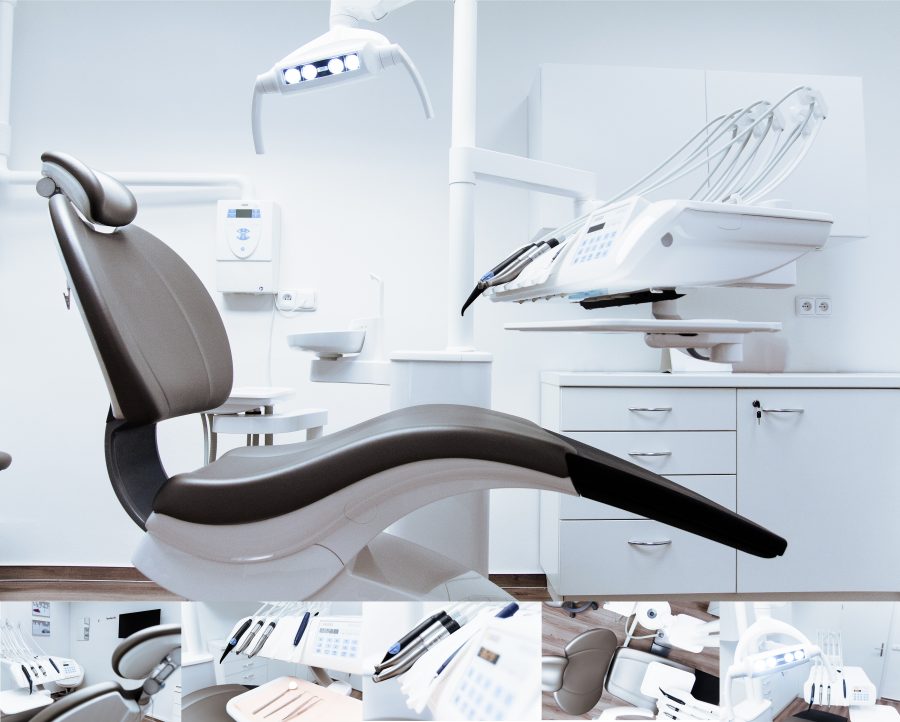Dental care is an essential aspect of overall health and well-being, and advancements in technology have revolutionized the field, enhancing both patient experience and treatment outcomes. From digital imaging to laser dentistry, technology has paved the way for more accurate diagnoses, minimally invasive procedures, and improved oral health outcomes. Let's explore how technology is reshaping the dental industry and empowering dental professionals to deliver high-quality care.
Digital Dentistry: Precision and Efficiency Redefined

Digital dentistry has transformed the way dental professionals diagnose, plan treatments, and fabricate dental restorations. Digital imaging techniques, such as cone-beam computed tomography (CBCT) and intraoral scanners, provide detailed three-dimensional images of the oral cavity, allowing for precise diagnosis and treatment planning. These digital tools enable dentists to visualize and analyze the dental structures with unprecedented accuracy, leading to more targeted and effective treatments.
Computer-Aided Design and Computer-Aided Manufacturing (CAD/CAM) technology has revolutionized the fabrication of dental restorations. With the help of intraoral scanners and advanced software, dentists can design dental crowns, bridges, and even aligners digitally. These digital designs are then sent to milling machines or 3D printers, which fabricate the restorations with exceptional precision and efficiency. This eliminates the need for messy impression materials and multiple appointments, streamlining the restorative process for patients.
Laser Dentistry: Minimally Invasive and Efficient Treatments
Laser technology has emerged as a valuable tool in various dental procedures, offering numerous advantages over traditional techniques. Dental lasers can be used for precise soft tissue surgeries, gum disease treatment, cavity preparation, and teeth whitening. Laser dentistry offers a minimally invasive alternative to traditional methods, reducing discomfort, bleeding, and healing time for patients. The focused and precise nature of lasers also allows for conservative tissue removal, preserving healthy tooth structure and promoting faster recovery.
Telehealth and Teledentistry: Expanding Access to Dental Care
Technological advancements have also facilitated the growth of telehealth and teledentistry, providing remote access to dental care and expanding its reach to underserved populations. Through virtual consultations and remote monitoring, patients can connect with dentists and receive professional guidance without the need for in-person visits. Teledentistry has proven particularly beneficial for individuals in rural areas, those with limited mobility, and patients seeking follow-up care or preventive advice.
Artificial Intelligence and Machine Learning: Enhancing Diagnostics and Treatment Planning
Artificial Intelligence (AI) and Machine Learning (ML) algorithms are being integrated into dental software, aiding in diagnostics and treatment planning. These intelligent systems can analyze large amounts of data, including radiographs, patient records, and clinical research, to identify patterns and provide evidence-based treatment recommendations. AI-powered imaging analysis can assist in detecting early signs of dental diseases, such as cavities or periodontal conditions, enabling early intervention and more effective treatment outcomes.
Smart Dental Devices and Oral Health Tracking
Technological advancements have also extended to smart dental devices and oral health tracking systems. Smart toothbrushes equipped with sensors and connectivity can monitor brushing habits, providing real-time feedback to improve oral hygiene practices. Oral health tracking apps allow individuals to track their oral health metrics, such as brushing time, pressure, and areas of focus. These tools empower patients to take an active role in maintaining their oral health, while also enabling dentists to track progress and provide personalized recommendations.
Embracing the Future: Collaboration between Dentists and Technology
The integration of technology into the dental industry is not meant to replace the expertise of dental professionals but rather to enhance their capabilities and improve patient care. Dentists and dental teams are continually adapting to technological advancements, acquiring new skills, and staying abreast of emerging trends. The collaboration between dentists and technology fosters a synergistic approach, combining clinical expertise with cutting-edge tools to provide comprehensive and patient-centric dental care.
In conclusion, technology has revolutionized the dental industry, elevating the standards of care and enhancing patient experiences. Digital dentistry, laser technology, telehealth, AI, and smart devices are just a few examples of how technology is transforming the field. As dentistry continues to evolve, the integration of technology will play an increasingly vital role in delivering precise diagnoses, efficient treatments, and improved oral health outcomes for patients worldwide.


